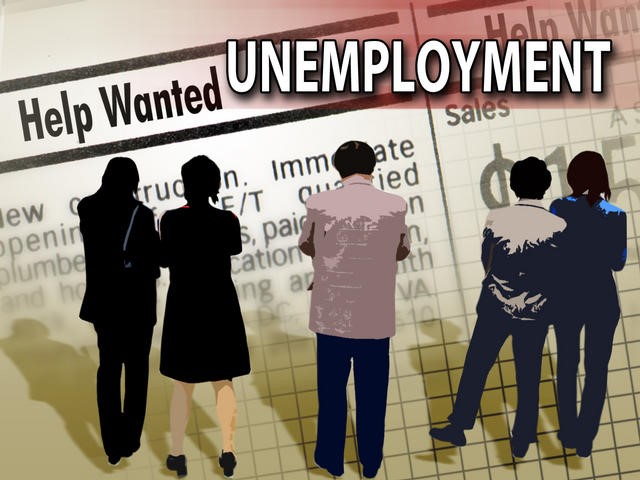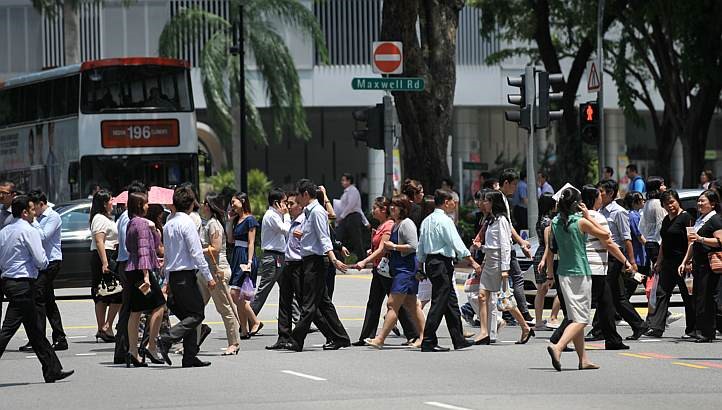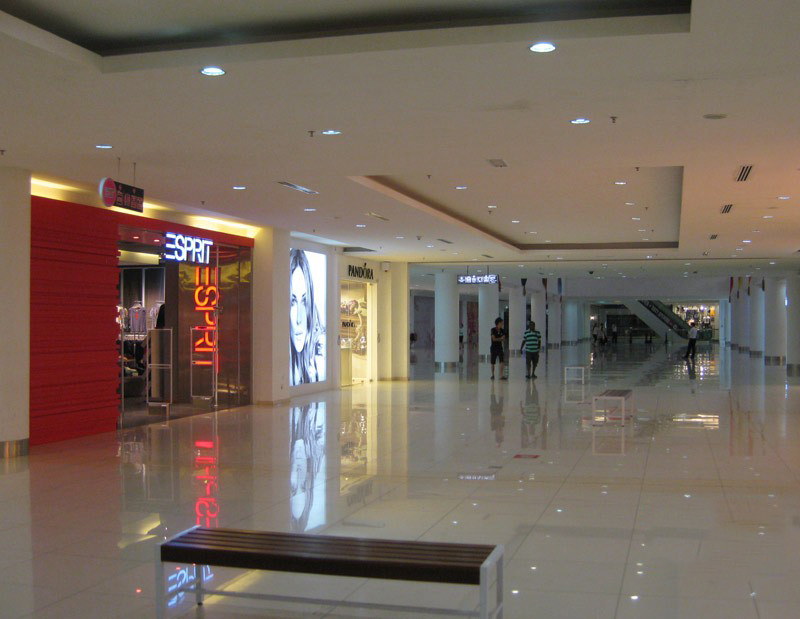Office workers in the central business district.PHOTO: ST FILE
Retrenchment are raising up, is this a sign of poor economy ? Unemployment for citizens and residents fell in the first quarter of the year, but this was the only bright spot amid other signs that the economy continues to weaken.

Findings from a labour report released yesterday by the Manpower Ministry showed slowing job growth, rising long-term unemployment, and layoffs that remain high despite being in decline.
The unemployment rate fell from 3 per cent last December to 2.6 per cent this March for Singapore citizens, and from 2.9 per cent to 2.7 per cent for residents, including both citizens and permanent residents. An estimated 60,400 residents, including 50,800 citizens, were unemployed in March this year. This was lower than the 64,600 residents and 57,900 citizens last December.
The overall unemployment rate remained unchanged at 1.9 per cent from last December.
But more older workers found themselves out of a job. Residents aged 50 and above saw their unemployment rate go up for the fourth quarter in a row, from 1.8 per cent in March last year to 2.2 per cent.

This was offset by a decline in the unemployment rate for residents younger than 30, due to a lower labour force participation rate among young people aged 15 to 24.

Credit Suisse economist Michael Wan said the recent retail slump may have prompted young workers to exit the labour force for other pursuits. "Perhaps as more retail stores close, the need for part-time workers and younger workers to front these shops has fallen," he said.
Economists flagged the low rate of re-entry as another cause for concern, coupled with the creeping prevalence of long-term unemployment. Of the residents who lost their jobs in the fourth quarter of last year, 46 per cent found work by March, down from 57 per cent in the same period last year. It was the lowest quarterly showing since June 2009.

The long-term unemployment rate, for residents out of work for 25 weeks or more, rose to 0.7 per cent from 0.5 per cent in March last year.
SIM University economist Walter Theseira said he was more worried about rising long-term unemployment than aggregate unemployment. He said: "A long-term unemployed worker may never return to his former career or his former career path. A worker who is unemployed just for a few weeks or months could resume his career trajectory quite readily."

Job growth slowed in the first quarter to 13,000, down from a seasonal high of 16,100 in the previous quarter. This was still higher than in the same period last year, but that was when the market abruptly shed 6,100 workers in its first contraction since the 2009 recession.

Redundancies fell to 4,710 from a high of 5,370 in the previous quarter, but this was still the highest number of first-quarter layoffs since 2009. Over half of these were in services, while manufacturing and construction saw fewer jobs lost.
Meanwhile, seasonally adjusted job vacancies fell 3,900 to 50,000 from the previous quarter.

Source: http://www.straitstimes.com/singapore/jobless-rate-falls-but-signs-point-to-weak-economy

Findings from a labour report released yesterday by the Manpower Ministry showed slowing job growth, rising long-term unemployment, and layoffs that remain high despite being in decline.
The unemployment rate fell from 3 per cent last December to 2.6 per cent this March for Singapore citizens, and from 2.9 per cent to 2.7 per cent for residents, including both citizens and permanent residents. An estimated 60,400 residents, including 50,800 citizens, were unemployed in March this year. This was lower than the 64,600 residents and 57,900 citizens last December.
The overall unemployment rate remained unchanged at 1.9 per cent from last December.
But more older workers found themselves out of a job. Residents aged 50 and above saw their unemployment rate go up for the fourth quarter in a row, from 1.8 per cent in March last year to 2.2 per cent.

This was offset by a decline in the unemployment rate for residents younger than 30, due to a lower labour force participation rate among young people aged 15 to 24.

Credit Suisse economist Michael Wan said the recent retail slump may have prompted young workers to exit the labour force for other pursuits. "Perhaps as more retail stores close, the need for part-time workers and younger workers to front these shops has fallen," he said.
Economists flagged the low rate of re-entry as another cause for concern, coupled with the creeping prevalence of long-term unemployment. Of the residents who lost their jobs in the fourth quarter of last year, 46 per cent found work by March, down from 57 per cent in the same period last year. It was the lowest quarterly showing since June 2009.

The long-term unemployment rate, for residents out of work for 25 weeks or more, rose to 0.7 per cent from 0.5 per cent in March last year.
SIM University economist Walter Theseira said he was more worried about rising long-term unemployment than aggregate unemployment. He said: "A long-term unemployed worker may never return to his former career or his former career path. A worker who is unemployed just for a few weeks or months could resume his career trajectory quite readily."

Job growth slowed in the first quarter to 13,000, down from a seasonal high of 16,100 in the previous quarter. This was still higher than in the same period last year, but that was when the market abruptly shed 6,100 workers in its first contraction since the 2009 recession.

Redundancies fell to 4,710 from a high of 5,370 in the previous quarter, but this was still the highest number of first-quarter layoffs since 2009. Over half of these were in services, while manufacturing and construction saw fewer jobs lost.
Meanwhile, seasonally adjusted job vacancies fell 3,900 to 50,000 from the previous quarter.

Source: http://www.straitstimes.com/singapore/jobless-rate-falls-but-signs-point-to-weak-economy

No comments:
Post a Comment